WRIGHT-PATTERSON AIR FORCE BASE, Ohio (AFRL) – What started in an Air Force Academy classroom could end up benefiting women worldwide, thanks to the Air Force Research Laboratory’s Edison Grant Program.
An Edison Grant also is allowing a young AFRL scientist-in-uniform to lead experiments with a material that may improve the performance of power switches.
Edison Grants provide Air Force and Space Force uniformed personnel a year of funding for novel research experiments. The Edison Grants answer one of the Air Force and Space Force Science and Technology Strategy’s objectives — to create a pipeline of technically-proficient Airmen — by encouraging military personnel to learn by research and testing the viability of concepts.
“The Edison Grant is an initiative to increase the technical proficiency of our Airmen and Guardians by funding highly-focused, military-led, research through small, short, and rigorous experiments in a risk-tolerant environment,” said Edison Program Manager Christopher Valdez, a research scientist with AFRL’s 711th Human Performance Wing location at Joint Base San Antonio, Texas.
The grants are for up to $75,000 for one year. A total of nearly $800,000 in Edison grants were awarded to the inaugural class of 18 winning proposals this year. Applications for the next round of grants are due Jan. 10, 2022.
Air Force Academy professor Maj. Erin Almand is using the $19,000 grant she received to research Toxic Shock Syndrome – a rare but life-threatening complication caused by a bacterial infection.
Toxic Shock can affect anyone through skin wounds or surgery, but notably also women of child-bearing age who use tampons and other devices, such as menstrual cups, contraceptive sponges or diaphragms.
Almand said as military women have more opportunities to serve in tactical and combat roles, they also may face greater obstacles to changing menstrual products, which may make them more vulnerable to bacterial infections and Toxic Shock. And while use of menstrual products had been primarily limited to western nations, they are increasingly being adopted by women around the world.
She said the project was inspired by a cadet, who used the topic last year to write a research grant application as part of a final assignment in Almand’s microbiology class. The cadet remembered a high school friend whose leg nearly had to be amputated because of Toxic Shock.
Almand built on the cadet’s idea to apply for an Edison Grant to update the decades-old research on Toxic Shock as it relates to what happens when products cannot be changed in a timely manner.
“Most of the previous studies look at what happens at the 0- to 8-hour mark, and look at things like absorbency,” Almand said. “We want to see what happens when women are using them longer than that — as many of our pilots are. Is there a way to do it safely? What about cups? They have a longer wear time, but also much less data available to analyze.
“The ultimate goal of this project is to provide recommendations to our military members.”
“Toxic shock affects one to three out of 100,000 U.S. women 19 to 44, but that is a significant number, over a large population,” Almand said.
Most of the research on toxic shock and women’s products was done in the 1980s. Tampons are now made with environmentally-sustainable components, like recycled materials, chlorine-free wood pulp, and unbleached organic cotton.
“Currently in the literature, the data is conflicting,” she said. “One study will say ‘cotton is the best, only use cotton’! The next study will say ‘cotton is the worst’. We want to dig through those inconsistencies and see how the current market reflects these recommendations.”
Some of the new recycled materials are omitted from the existing literature, because they weren’t widely used in the 1980s, when most of this research was done.
“One of the things we have seen in the literature is an increase in TSS linked to using tampons without an applicator, which is becoming more popular to limit environmental waste,” Almand said.
At AFRL’s Sensors Directorate, First Lt. Jeremiah Williams is using his $75,000 grant to research ways to improve the electrical performance of lateral Schottky barrier diodes (SBDs) made from Gallium Oxide, an emerging ultra-wide bandgap semiconductor material. The material properties of Gallium Oxide allow it to perform better than Silicon, the primary semiconductor material used in electronics today.
“Our long term goal is to create power switching integrated circuits in Gallium Oxide, and lateral devices enable us to fabricate the entire circuit on the same chip,” Williams said.
Transistors and diodes are the two semiconductor devices used in basic power switching circuits.
“Our group has made record-breaking transistors in Gallium Oxide, but we have not yet thoroughly explored SBDs. My work will attempt to implement optimization techniques from other, more mature, semiconductor technologies into Gallium Oxide SBDs to improve their performance for use in future integrated circuits.”
Both Almand and Williams said the Edison Grant team was helpful during the application process.
“It was refreshing change from some of the grants I have applied for previously,” Almand said.
AFRL Edison manager Dr. Christopher Valdez said the grants open doors for researchers in uniform to contribute new ideas to their mission.
“By applying for the Edison Grants, our Airmen and Guardians are able to manage and execute their own project to gain S&T experience on small experiments that can potentially develop into core-funded efforts.”
The grant recipients – the Edison Fellows – also are supported by the Edison Fellowship Community, a feature of the program that brings the Fellows together to share scholarship and make connections.
“This is a community-based effort,” Valdez said. “We want our fellows to lean on each other. We want our military members to have connections that they otherwise did not have before.”
“With our community, too, we have fellows who have been in the military for a decade – assistant professors, associate directors. We also have members who are first lieutenants, who are literally doing research for the first months of their whole careers in the Air Force.”
“Because we have these different levels of expertise, we are looking to see military members helping each other out – our senior members encouraging the younger folks.”
So far, no Edison projects have been identified by the Air Force for further research.
“Right, now it is a little too early for us to tell,” Valdez said. “By the end of the year we’ll be able to see where things are. In December, we are hoping to see some of the results of their scientific research.”
AFRL Chief Technology Officer Dr. Timothy Bunning said the Edison Grants program is a vital step toward the USAF/USSF Science and Technology Strategy’s goal of creating more technically-proficient Airmen.
“I applaud the tenets of the Edison Grant program,” Bunning said. “Being a practitioner in the S&T community is uber important and this program helps enable military personnel with the resources to get after it. Kudo’s to those that have applied, kudo’s to those partaking, kudo’s to those administering the program.”
“The future of the DAF is about people and technology. This program aims to raise the bar on both,” Bunning added.
Williams said hands-on research leadership experience can benefit the Airman and Guardian as they advance in their careers in uniform and afterward.
“This program allows active duty researchers to lead projects when they may otherwise take on more supporting roles due to their shorter time with a team that could be tackling a huge program decades in the making,” he said.
“The timeline of the Edison Grant also encourages work on incremental developments that are important to research, but can be difficult to focus on in a large program. Additionally, junior fellows are given the opportunity to manage funds before taking on more fiscal responsibility later in their careers,” said Williams.
Williams’ team includes fellow AFIT graduate Capt. Karanvir Singh, junior government civilians and contractors with engineering expertise, and Sensors Directorate subject matter experts working as mentors.
“So far, I have benefited professionally from the Edison Grant program by writing the proposal, planning this technical effort, and interacting with several contracts,” Williams said.
“I will also benefit from the opportunity to lead and make decisions with my own research project as a junior researcher early in my career. Additionally, I don’t think I would have dealt with our various contracts as much as I have, now that I am directly responsible for funding.”
Almand said the Edison Grant has benefitted her in two important ways.
“The biggest thing I have learned is how you get people to buy in who might not have been on board originally,” she said. “And it helped me really get a handle on what it means to run your own team. It’s leadership, but it is a different kind of leadership.”
Her team includes another PhD, two masters-level members, and 10 cadets – five male and five female.
“The men are getting comfortable talking about menstrual health,” she said.
Almand said the cadets getting their first taste of lab life are the real winners in the project.
“It’s not about me,” she said. “It is about the younger generation.”
“This is the first time they don’t feel like students. They are scientists.”
Currently, the Edison program is accepting grant applications for 2022. The deadline Jan. 10, 2022. For more information about the Edison Grants, email the Edison Team at EdisonGrants@us.af.mil.

United States Air Force Academy microbiology Maj. Erin Almand is using an Edison Grant to research menstrual products used by military women and advance what is known about Toxic Shock Syndrome. U.S. Air Force Academy — (U.S. Air Force photo/Trevor Cokley)
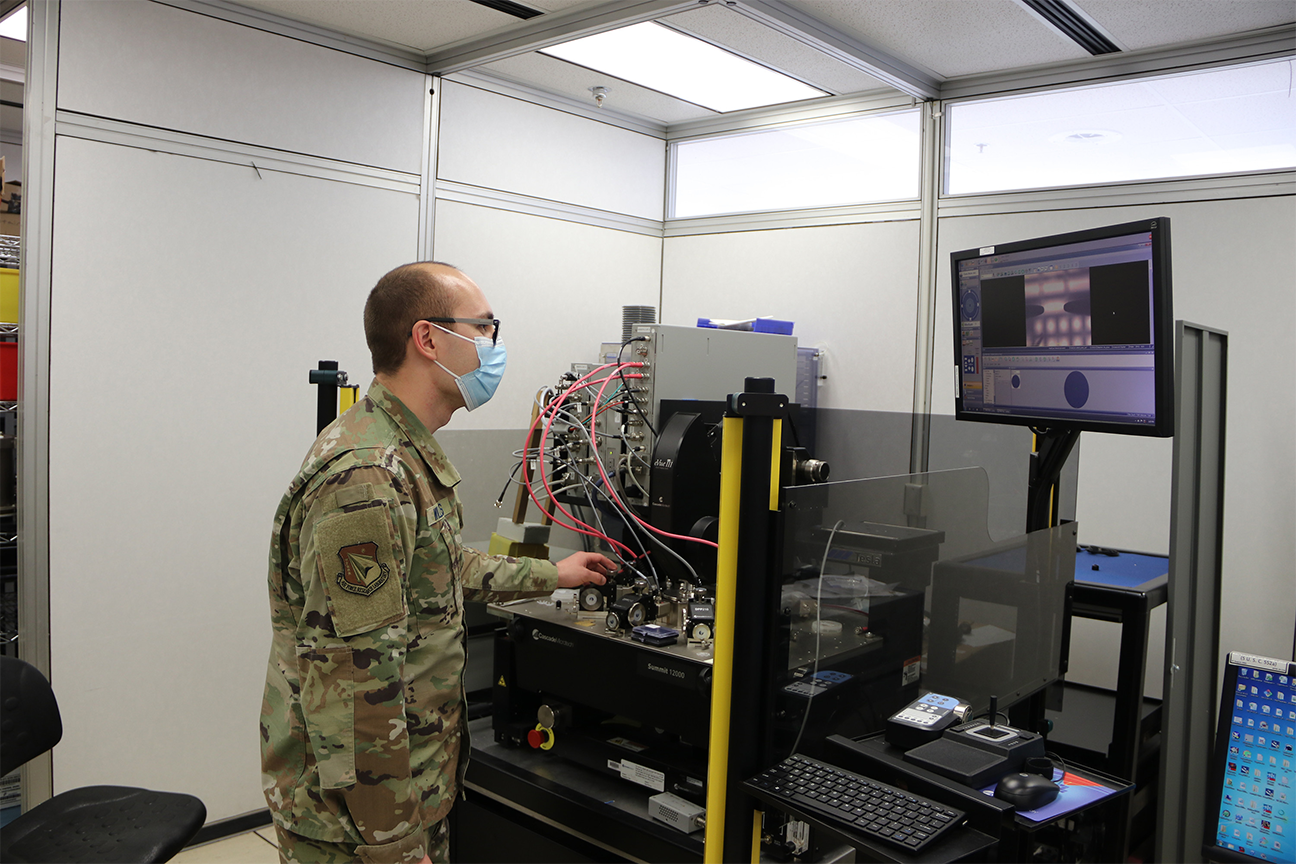
First Lt. Jeremiah Williams of the Air Force Research Laboratory’s Sensors Directorate is using an Edison Grant to lead experiments with Gallium Oxide, a material that may improve the performance of power switches. (U.S. Air Force photo/Michael Ross)

First Lt. Jeremiah Williams, front, works in the “clean room” of the Air Force Research Laboratory Sensors Directorate at Wright-Patterson Air Force Base near Dayton, Ohio. Lt. Williams is a recipient of an Air Force Edison Grant, which allows active duty researchers to lead short, highly-focused projects, with their own money. (U.S. Air Force photo/Michael Ross)
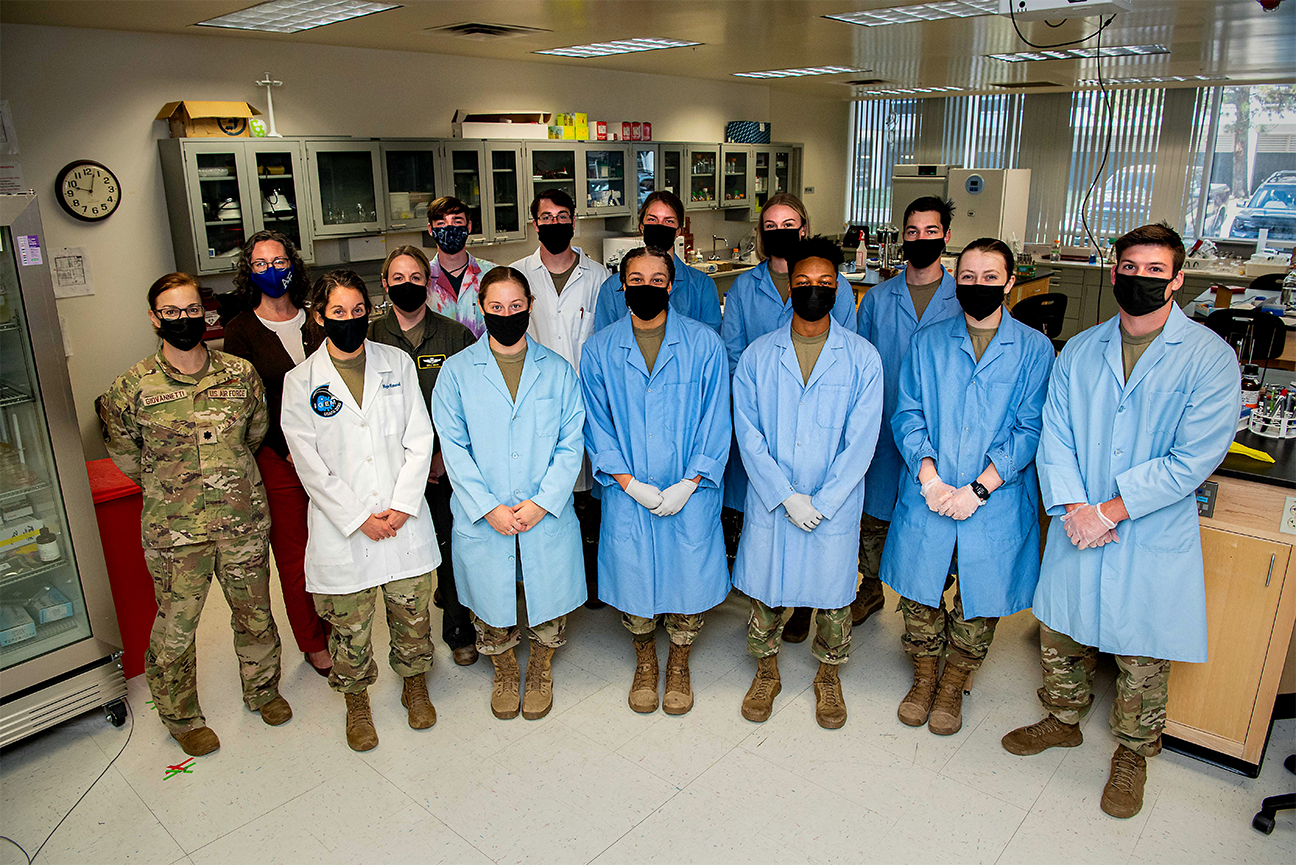
Maj. Erin Almand’s Edison Grant research team includes 10 United States Air Force Academy Cadets. “This is the first time they don’t feel like students,” she said. “They are scientists.” U.S. Air Force Academy — (U.S. Air Force photo/Trevor Cokley)
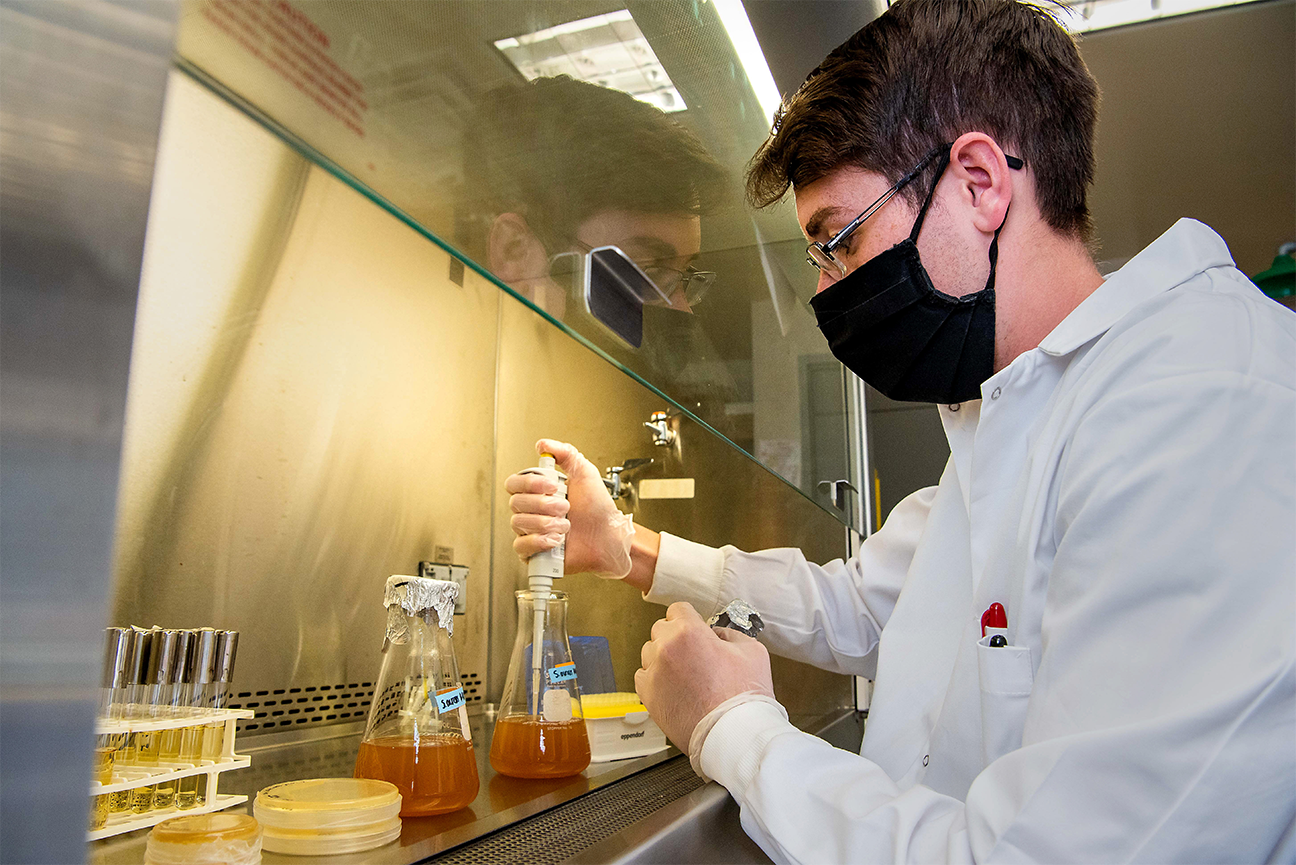
C1C David Hatfield inoculates overnight cultures of S. aureus (bacteria). Air Force Academy — (U.S. Air Force photo/Trevor Cokley)
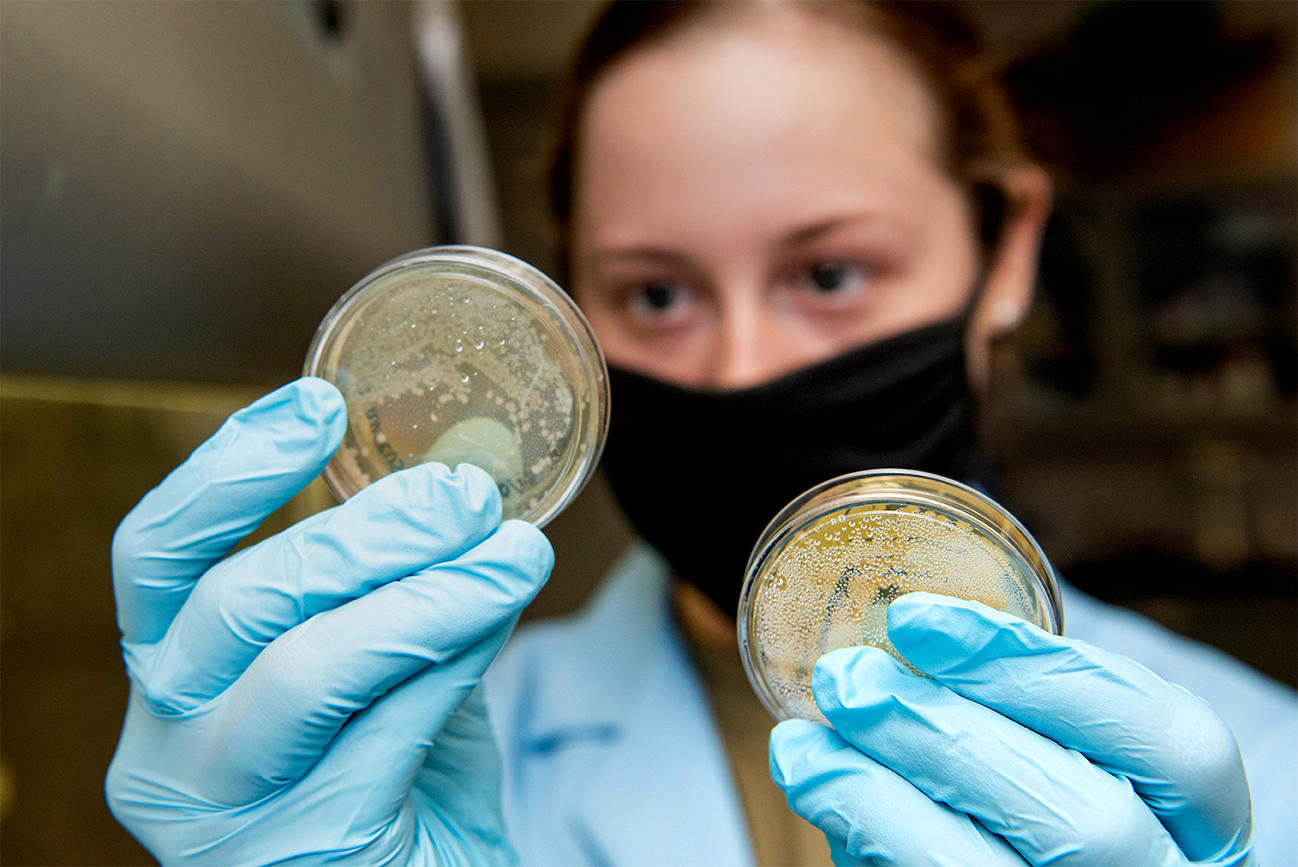
Air Force Academy C2C Margaret Warner examines S. aureus (bacterial) growth. Air Force Academy — (U.S. Air Force photo/Trevor Cokley)
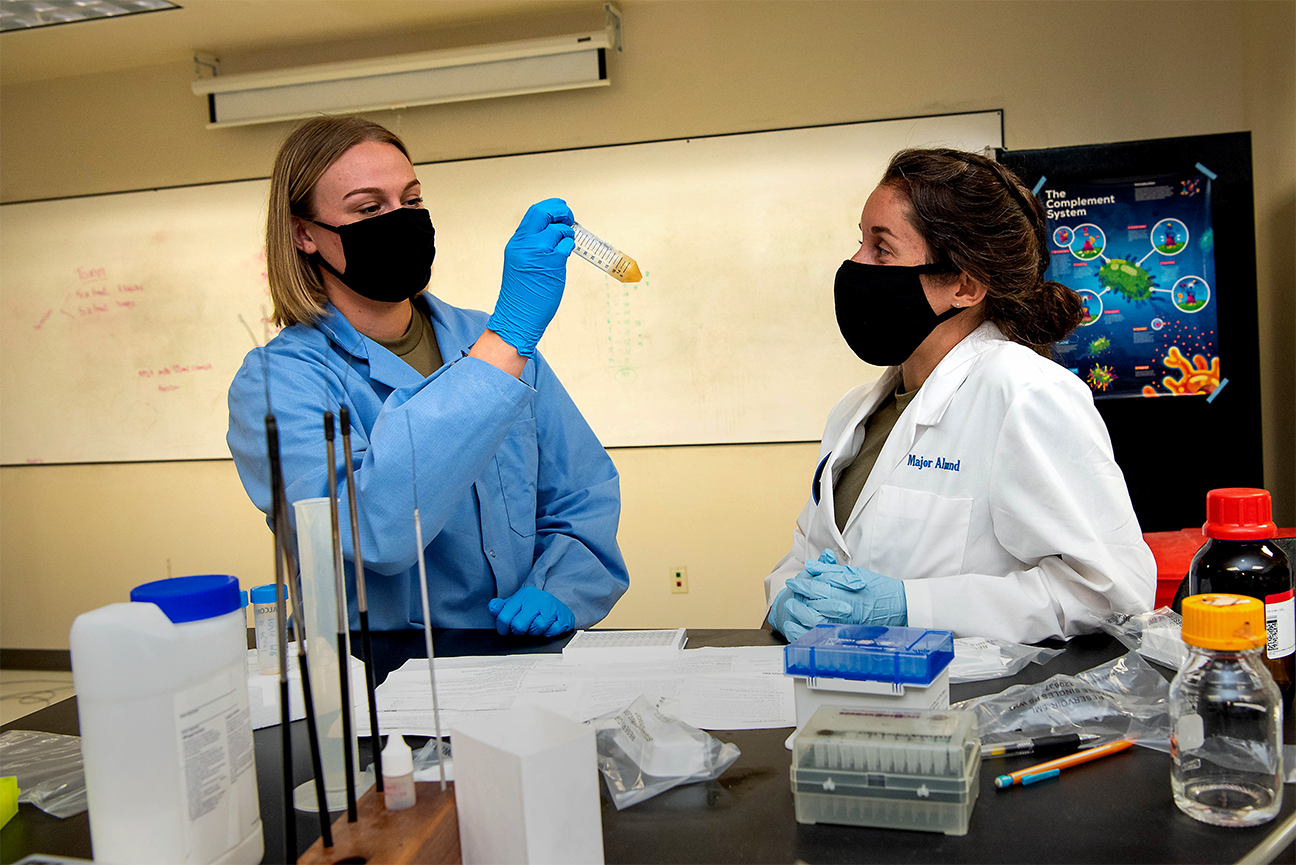
Air Force Academy C1C Madelyn Duckworth, the original author of the grant, discusses project progress with Maj. Erin Almand. Air Force Academy — (U.S. Air Force photo/Trevor Cokley)
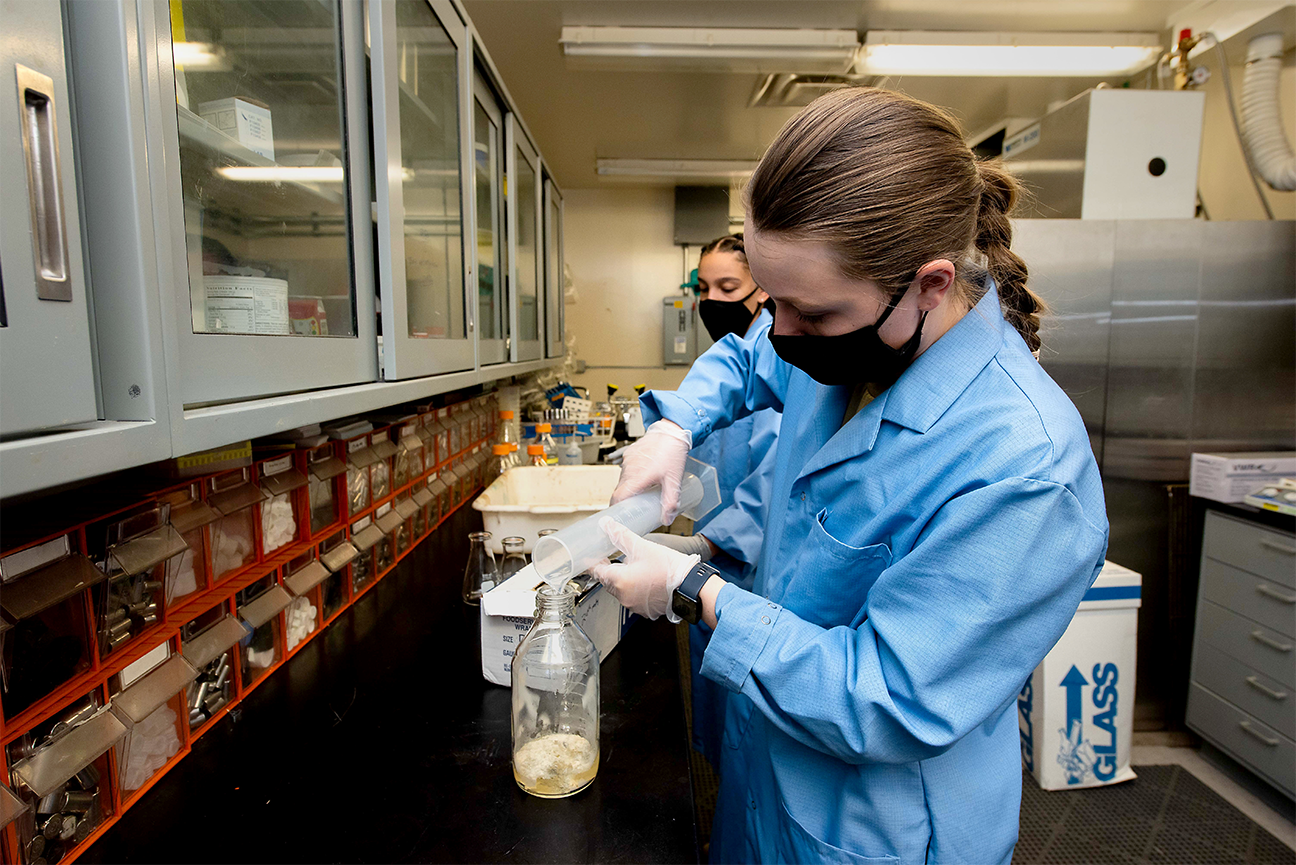
Air Force Academy C1C Alexandra Weisenburger makes bacterial growth media. Air Force Academy — (U.S. Air Force photo/Trevor Cokley)

